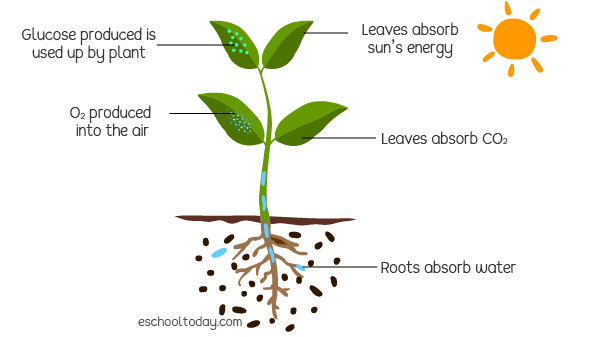- Photosynthesis
- Recommended Lessons
Conditions for photosynthesis
Below are things that plants need for photosynthesis:
- Carbon dioxide: It is a colorless, naturally occurring odorless gas found in the air that we breathe. It has a scientific symbol CO2. CO2 gas is produced by burning carbon and organic compounds. It is also produced when plants and animals breathe out during respiration.
- Water
- Light: Even though both natural and artificial light is OK for plants, natural sunlight is best for photosynthesis because they have other natural UV properties that help the plant.
- Chlorophyll: This is the green pigment found in the leaves of plants.
- Nutrients and minerals: Chemicals and organic compounds that the plant roots absorb from the soil.
Below are things that plants make by photosynthesis:
- Glucose
- Oxygen
 (light energy is shown in brackets because it is not a substance)
(light energy is shown in brackets because it is not a substance)

Plants get CO2 from the air through their leaves and water from the ground through their roots. Light energy comes from the sun.
The oxygen produced is released into the air from the leaves. The glucose produced can be turned into other substances, such as starch, used as a store of energy. This energy can be released by respiration.
If factors that aid in photosynthesis are absent or less, it can negatively affect the fruits of the plant. For example, less light, insects that chew on leaves, less water can make plants such as (tomato plant) suffer and produce less yield.
